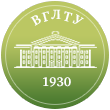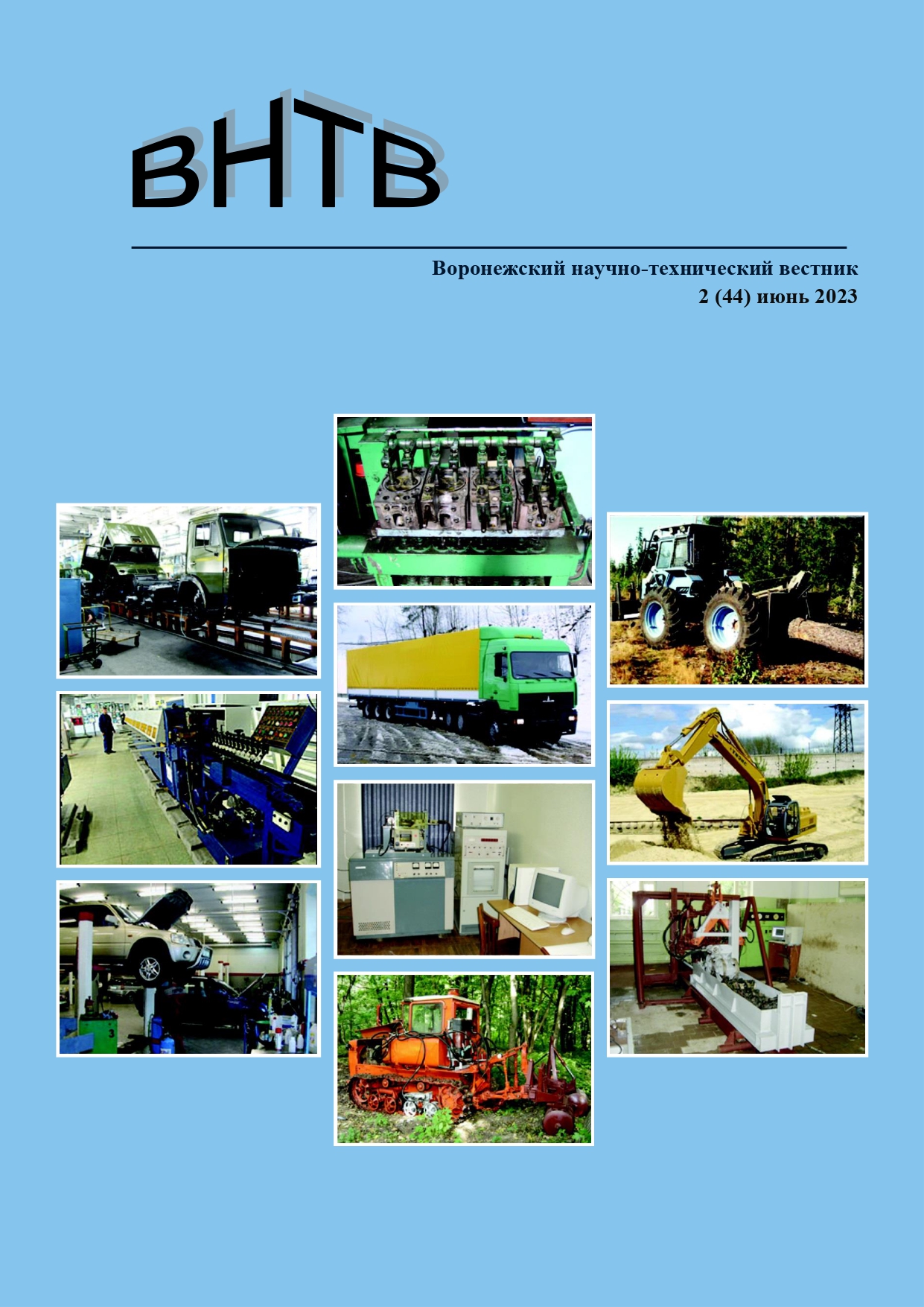UDC 621.791.927.5
The article is devoted to the study of the effect of the curvature of the receiving surface on the geometric parameters of a single deposited layer during additive shaping by an electric arc in a protective gas medium. Based on theoretical studies, a mathematical dependence has been established for calculating the height of a single deposited layer, taking into account the shape of the receiving surface. The theoretical regularity of the change in the height of a single deposited layer from the curvature of the receiving surface is established. To confirm the obtained theoretical dependence, a series of experiments were planned and carried out, according to the results of which, on the basis of dispersion analysis, the influence of the curvature of the receiving surface on the geometrically parameters of a single deposited layer was established.
ADDITIVE TECHNOLOGIES, FORMFORMATION, CONVEX SURFACE, CONCAVE SURFACE, SINFULNESS
1 Состояние вопроса исследования и актуальность работы
В настоящее время аддитивные технологии применяются во многих сферах промышленной деятельности. Применения таких технологий позволяет сократить экономические затраты на определенных этапах технологического процесса. Благодаря разработке новых технологий и способов формирования единичных слоев, становится возможным расширение области применения технологий аддитивного формообразования [1-5].
Одним из наиболее производительных является способ аддитивного формообразования изделий, реализующий послойное построение посредством расплавления металлической проволоки электрической дугой с последующим застыванием расплавленного материала. Такой процесс происходит в среде защитного газа, имеет ряд преимуществ, обозначенных в работах [6-8].
В то же время, следует отметить некоторые недостатки способа аддитивного формообразования электрической дугой, среди которых выделяют относительно низкую точность изготовления, деформацию изделия. Однако, обозначенный выше способ является перспективным, о чем свидетельствует достаточно большое количество публикаций, посвященных изучению проблем и решению задач в области аддитивного формообразования с помощью электрической дуги.
Одной из таких проблем является проблема формирования структуры металла наплавляемых валиков [9-12]. Другой, не менее важной проблемой является обеспечение точности геометрии деталей, полученных таким способом [13-20]. Авторами отмечается, что одной из причин, которая может быть связна с этим, является значительный перегрев, которому подвергаются предыдущие слои в ходе значительного долгосрочного термического воздействия. Так же, с этим фактором может быть связано изменение геометрии получаемых изделий. При увеличении высоты наплавляемого изделия могут наблюдаться значительные изменения геометрии наплавляемого слоя.
Другим недостатком способа аддитивного формообразования электрической дугой является анизотропия физико-механических свойств изделий, что сказывается на качестве и уровне эксплуатации этих изделий. Одним из решений данной проблемы может стать реализация заполнения внутренней структуры изделий слоями криволинейной формы. В работе [21], рассмотрены способы разделения цифровой модели на криволинейные слои для 3D печати, в частности на слои цилиндрической и конической формы, разработан алгоритм деления цифровой модели на криволинейные слои для 3D печати.
2 Материалы и методы
Построение изделий криволинейными слоями цилиндрической формы возможно производить, как на подготовленную ранее приемную поверхность, так и на поверхность, сформированную в процессе аддитивного формообразования. Следует отметить, что изменение геометрических параметров приемной поверхности может оказывать существенное влияние на геометрические параметры поперечного сечения единичных наплавляемых слоев, что необходимо учитывать при разработке алгоритмов разделения и заполнения их внутренней структуры. Поэтому актуальной задачей является установление влияния кривизны приемной поверхности на геометрические параметры единичных наплавляемых слоев при аддитивном формообразовании электрической дугой в среде защитного газа.
3 Результаты исследований
Для теоретического исследования влияния кривизны приемной поверхности на формируемый слой было составлено уравнение кривой, описывающей наружный участок наплавляемого слоя в виде эквидистанты (рис. 1)
 , (1)
, (1)
где  – векторное уравнение участка кривой приемной поверхности, вдоль которой происходит перемещение экструдера
– векторное уравнение участка кривой приемной поверхности, вдоль которой происходит перемещение экструдера  , где
, где  – параметр определяющий точку на кривой
– параметр определяющий точку на кривой  ;
;  – высота наплавляемого слоя;
– высота наплавляемого слоя;  – нормаль к кривой
– нормаль к кривой  , которую можно вычислить по формуле:
, которую можно вычислить по формуле:
 . (2)
. (2)
1. Burns M. Automated Fabrication: Improving Productivity in Manufacturing. Englewood Cliffs, N.J., USA:PTR Prentice Hall, 1993. 369 pp.
2. Saprykin A.A. Increasing the productivity of the selective laser sintering process in the manufacture of prototypes: dis. Candidate of Technical Sciences: 05.03.01: protected 19.11.06: ap-proved 13.04.07. Jurga: Tomsk Polytechnic University, 2006.
3. Improving the quality of additive methods for forming the surfaces of odd-shaped parts with the application of parallel kinematics mechanisms / V.V. Kuts, M.S. Razumov, A.N. Grechu-khin, N.A. Bychkova //International Journal ofApplied Engineering Research. 2016. Vol. 11. No. 24. pp. 11832-11835.
4. Dobroskok V.L., Abdurayimov L.N., Chernyshov S.I. Rational orientation of elements in their layered shaping based on the initial 3d triangulation model // Scientific Notes of the Crimean Engineering Pedagogical University. 2010. No. 24. pp. 13-21.
5. Optimum part deposition orientation in stereolithography / S.K. Singhal, A.P. Pandey, P.M. Pandey, A.K. Nagpal // Computer-Aided Design & Applications. 2005. Vol. 2. Nos. 1-4. P. 319-328.
6. Oleshitsky A.V., Garkavtseva P.A., Grechukhin A.N. Creation of an installation for wire-arc additive manufacturing based on a cnc milling machine In the collection: TECHNIQUE AND TECHNOLOGY: WAYS OF INNOVATIVE DEVELOPMENT. Collection of scientific articles of the 11th International Scientific and Practical Conference. Kursk, 2022. pp. 236-241.
7. Grechukhin A.N., Kutz V.V., Shcherbakov P.S. Identification of the influence of the spa-tial orientation of the deposited layers, as well as their overlap coefficient on the error of the surface shape during additive shaping by an electric arc //Bulletin of the Voronezh State Technical Universi-ty. Vol. 17. No. 6. 2021. DOIhttps://doi.org/10.36622/VSTU.2021.17.6.017.
8. Garkavtseva P.A., Grechukhin A.N. Development of a device for additive shaping by an electric arc with increased accuracy In the collection: Modern instrumental systems, information technologies and innovations. Collection of scientific papers of the XVII International Scientific and Practical Conference Editorial Board: Razumov M.S. (ed.). Kursk: Southwest State University, 2022. pp. 133-138.
9. Hong S. Byun, Kwan H. Lee. Determination of optimal build direction in rapid prototyp-ing with variable slicing // Int. J. Adv. Manuf. Technol. 2006. № 28. P. 307-313.
10. Hong S. Byun, Kwan H. Lee. Optimal part orientation of rapid prototyping using a genet-ic algorithm // Computers & Industrial Engineering. 2004. P. 426-431.
11. Hur J., Lee K. The development of a CAD environment to determine the preferred build-up direction for layered manufacturing // Int. J. Adv. Manuf. Technol. 1998. № 14. P. 247-254.
12. Kim J.Y., Lee K., Park J.C. Determination of optimal part orientation in stereolithograph-ic rapid prototyping // Technical Report, Department of Mechanical Design and Production Engi-neering. Seoul: Seoul National University. 1994.
13. Determining fabrication orientations for rapid prototyping with stereolithography apparatus / P.T. Lan, S.Y. Chou, L.L. Chent, D. Gemmill // Computer-Aided Design. 1997. Vol. 29. № 1. P. 53- 62.
14. Improving the accuracy of additive forming methods Innovation, quality and service in engineering and technology/ A.N. Grechukhin, V.V. Kuts, M.S. Razumov and others. 2018. Pp. 128-131
15. Grechukhin A.N., Kuts V.V., Razumov M.S. Control of spatial orientation of robot units in the process of additive forming of products Bulletin of Voronezh state technical University. 2018. 4. Pp. 122-129.
16. Grechukhin A.N., Kuts V.V., Razumov M.S. Experimental determination of the crosssection parameters of a single layer in the additive forming products News of Tula state University. Technical science. 2019. 10. Pp. 264-270.
17. Grechukhin A.N., Anikutin I.S., Byshkin A.S. Management of space orientation of the end effector of generation of geometry system fiveaxis manufacturing machinery for additive generation of geometry MATEC Web of Conferences. 2018. Vol. 7. Pp. 128-136. DOIhttps://doi.org/10.1051/matecconf/201822601004
18. Grechukhin A.N., Kuts V.V., Razumov M.S. Ways to reduce the error of additive methods of forming - 2018 MATEC Web of Conferences. Vol. 7. Pp.142-150. DOIhttps://doi.org/10.1051/matecconf/201822601002
19. Grechukhin A.N., Kuts V.V., Oleshitskiy A.V. Development and Research of Technological Equipment that Implements Dynamic Control of Process of Additive Fabrication of Parts of Complex Spatial Shapes Based on Mechanisms with a Hybrid Layout. IOP Conference Series: Ma-terials Science and Engineering. 2020. 709(3). 033112. DOIhttps://doi.org/10.1088/1757-899X/709/3/033112
20. Investigation of the process of additive formation of fusible materials using a lowpower solid-state laser/ V.V. Kuts, V.S. Merkulov, A.N. Grechukhin, A.S. Privalov// IOP Conference Series: Materials Science and Engineering. 2021. 1029(1). 012010. DOIhttps://doi.org/10.1088/1757- 899X/1029/1/012010
21. Kutz V.V., Grechukhin A.N., Oleshitsky A.V., Privalov A.S., Shcherbakov P.S. ALGORITM DIVISION OF A VOLUMETRIC MODEL INTO CURVED LAYERS FOR 3D PRINTING//Fundamental and applied problems of engineering and technology. 2021. No. 5 (349). pp. 39-45.










